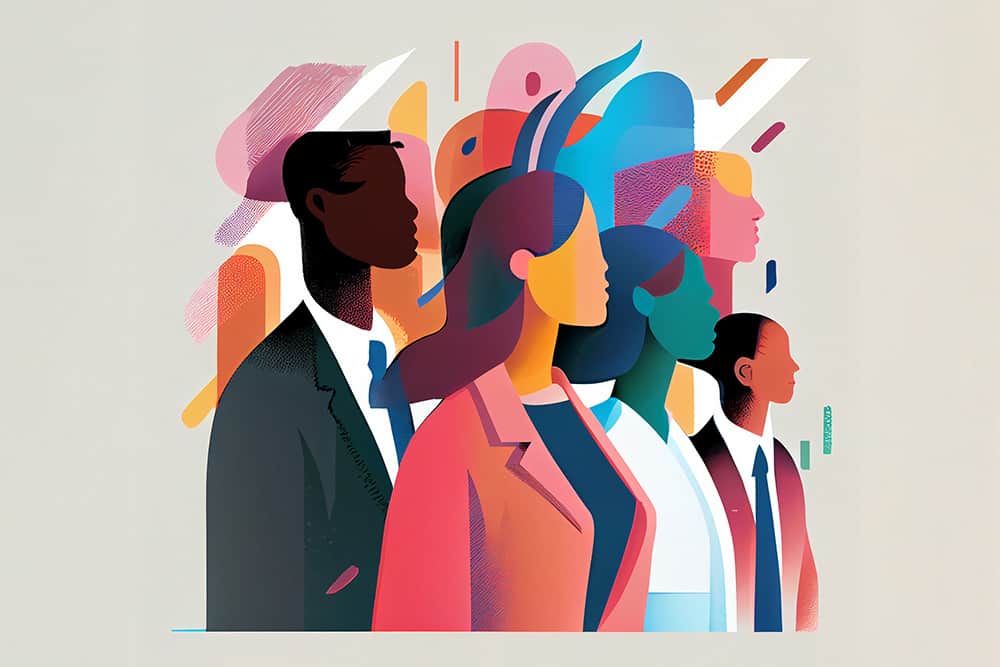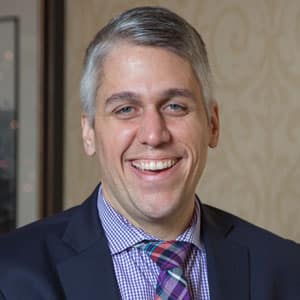
Home » April 2023 » Diversity, Equity, & Inclusion
Diversity, Equity, & Inclusion
Who’s in the Room?
stock.adobe.com / bxtr
The COVID-19 pandemic has exacerbated long-existing systemic racial and economic inequities in our country. In this challenging time, it’s vital to think about the future of mobility and the public realm with intentionality through the lens of equity. A great starting place is developing institutional capacity and diversifying our organizations in addressing mobility challenges and inequities. There is a need for a bold commitment to equity and planning for mobility that can start with simple changes to visibly highlight emerging voices in our transportation profession through representation at speaking engagements and panels at professional events.
I still remember my first time being asked to be on a speaking panel. I was in my first job out of graduate school, working for the Florida Department of Transportation in Southeast Florida. The panel involved representatives from various agencies talking about technical assistance programs in the Glades area of western Palm Beach County around Lake Okeechobee. The communities of Belle Glade and Pahokee, agricultural communities with high rates of poverty and more than 90% of populations of color, had struggled economically. Transportation access was hindering connections to expanding employment opportunities and medical care in eastern Palm Beach County.
At this event in Belle Glade, community organizations, local city officials, and businesses gathered for an event to talk about programs and services to improve transportation access. The panel represented various state and regional organizations with resources available. I thought nothing of it at the time, but this expert panel consisted of three white men and one white woman, talking to an audience of predominantly people of color. Unfortunately, I had thought little about the composition of event speaking panels as a function of my white privilege.
Over my 18-year public sector career, I have had the opportunity to participate in dozens of roles representing my agencies or to speak on my professional work as a transportation planner. Additionally, I have attended dozens of conferences and professional events with various speaking panels and guest speakers. Never was I thinking about what was missing because I could see myself as a cisgender white male represented everywhere in the profession, at all levels of organizations, and in the majority of positions of power and decision-making in transportation.
I recall listening to a podcast with tech journalist Kara Swisher discussing the planning for her Recode/Decode conference. She was lamenting about the obtuse, insulated Silicon Valley tech industry events that were oversaturated with white men representing innovation. Her event she proclaimed would have no “manels”—panels consisting only of white men. Instead, she had put energy into curating a series of events with panelists and speakers representing women, people of color, gender non-conforming, and true representations of everyone working in the technology. She said that if you only are finding white men, try harder.
Her words stuck with me about how important it is for events to think equitably about who is representing industry and thought leadership. It is so critically important for us to grow and diversify the future of our transportation and mobility industry.
After a conversation with a few colleagues when planning a panel for the National Association of City Transportation Officials (NACTO) back in 2018, some referenced an informal framework that organizations had deployed related to speaker diversity. The general rule was to review all panels to ensure that there was never more than one white male on any panel and no duplicate panel participants. I started embracing this for myself when later asked to participate on a panel, declining to participate and recommending another co-worker who identifies as non-binary.
That has led me to defer panel participation to other colleagues at the City or lifting up other professionals that I have met through networking, professional organizations, or other events. When planning events, it’s important to review the demographics of speakers with an eye to diversity. When you’re attending events, pay attention to who is speaking and who is participating in panels. Offer candid feedback to the professional organizations that host events if panel diversity is lacking.
Related to both economic opportunity and mobility, communities of color experience opportunity differently. Vulnerable and historically marginalized communities of color experience disproportionately high levels of impact whether related to crashes or access to safe, affordable, and efficient transportation options. For the transportation profession to solve these challenges, it needs to reflect those most impacted by the current status quo of transportation.
Transportation issues are primarily informed by those who have greater visibility; traditionally, white males have dominated transportation professional organizations. This also creates an imbalance in how perspectives are presented, critiques of transportation are offered, and solutions for the future of mobility are given attention.
We need to expand our horizons and our networks to encourage the racial, gender, social, ethnic, and sexual orientation diversification of our profession. It starts with ensuring that all professionals are able to see themselves represented and to be recognized for their contributions with expanded opportunities to speak as part of panels at conferences and events. Of course, it cannot stop there. Representation on panels is a step, but we also need to push conversations in our respective organizations about how our HR practices need to be reformed to hire and retain more diverse candidates while thinking critically about the culture within our organizations. ◆
Josh Naramore is the Mobile GR Director for the City of Grand Rapids, MI, and a member of IPMI’s Electric Vehicle Readiness Cohort and Smart Transportation Task Force.
-
Josh Naramorehttps://parking-mobility-magazine.org/author/josh-naramore/June 7, 2022
-
Josh Naramorehttps://parking-mobility-magazine.org/author/josh-naramore/September 6, 2022
-
Josh Naramorehttps://parking-mobility-magazine.org/author/josh-naramore/August 1, 2023


The Complexities of Identity
The Vitality of Discovering your own Intersectionality

Age Is Only a Number
To create equity and inclusion for all age groups, it’s









